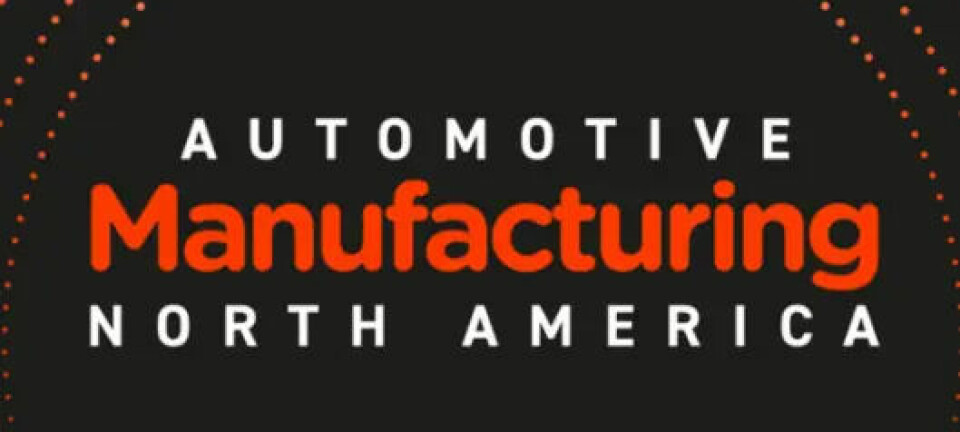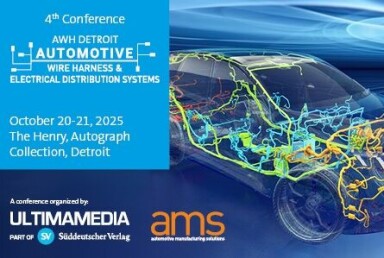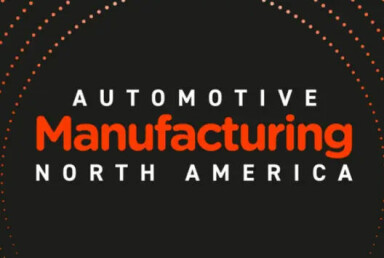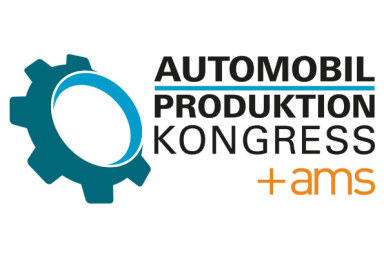Sustainable Production

The paradox of Sustainable Production: Why less might mean more
Automotive manufacturers chase complex technologies for greener production, yet the most effective sustainability gains come from fundamental simplicity: making less, wasting less, and questioning whether volume growth remains viable.
The automotive industry has spent billions chasing technological sophistication in its quest for sustainability. Yet some of the most effective solutions lie not in greater complexity, but in something far more prosaic: making less, using less, and wasting less. Perhaps this counterintuitive idea can most aptly be gleaned in the example of Megacasting, where less complexity simultaneously leads to higher levels of efficiency, and increased sustainability gains. But there are many other examples.
The tension between increased high-tech ambition and enhanced low-tech pragmatism reveals an uncomfortable truth about sustainable manufacturing - that the answer to tomorrow's problems might require rethinking yesterday's assumptions about production itself. Consider the arithmetic.
In 2017, tyre facilities in the United States alone released 3.5 million metric tons of carbon dioxide - roughly equivalent to the emissions of Congo; a nation of 87 million people.
While such figures are often cited to demonstrate the scale of the challenge, they obscure a more interesting question: why are we producing 3 billion new tyres annually when 800 million become waste each year? The problem is not merely how we manufacture, but how much.
The allure of complexity in automotive production
The instinct to solve environmental challenges with ever-expanding technological sophistication runs deep. BMW's San Luis Potosí plant in Mexico exemplifies this approach: digital twin technology simulates processes before implementation, AI algorithms predict energy demands, and a digital energy control room analyses data in real time. The facility represents sustainability through digitisation, with every decision rooted in data analytics and artificial intelligence.
Whether viewing 'sustainable' as meaning better environmental and social outcomes or sustaining the organisation's economic viability and longevity, it still comes down to resource efficiency
Toyota has pursued a similar path in its North American operations, deploying IoT-based predictive maintenance systems that use AWS services to detect equipment anomalies before they manifest. Ford's Dearborn Truck Assembly Plant employs AI-powered systems that identify defects such as cracks and misalignments, reducing material waste through algorithmic precision. These are not marginal improvements; they represent wholesale transformations of manufacturing operations.
The appeal is obvious. Such systems promise control - the ability to measure, predict, and optimise every variable in the production chain. They offer the comfort of data, the reassurance of algorithms, and the prestige of cutting-edge technology. They are also cost-intensive, complex, and require substantial infrastructure investment. Yet for all this sophistication, the most environmentally significant gains often come from somewhere else entirely.
The discipline of reduction
When Sherri Monroe, executive director of the Additive Manufacturer Green Trade Association, defines sustainable manufacturing, she focuses not on technology but on resource efficiency. "Whether viewing 'sustainable' as meaning better environmental and social outcomes or sustaining the organisation's economic viability and longevity, it still comes down to resource efficiency," she observes. Both definitions, she argues, are reliant on reducing waste - of materials and energy, of labour and time.
This framing reorients the conversation. Sustainable manufacturing becomes less about deploying the cleverest technology and more about interrogating the fundamentals: Do we need to produce this part at all? Can we consolidate components? Are we manufacturing excess inventory that will sit in warehouses, accruing costs and obsolescence?
The implications extend beyond environmental virtue. At Skoda's Kvasiny plant, Miloš Halbich emphasises that waste reduction serves dual purposes: lowering environmental impact while simultaneously reducing costs. This is not a trade-off between sustainability and profitability but an alignment of both objectives through the same mechanism - making less, more efficiently.
Additive manufacturing offers a glimpse of this philosophy in action. By building components layer by layer, 3D printing - an advanced technology, no doubt - eliminates the material waste inherent in subtractive processes like CNC machining, (Computer Numerical Control) where blocks of material are whittled down to the desired part. The issue isn’t whether to completely eliminate digital technologies in sustainable production - that would be both absurd and impossible.
As we navigate fluctuating energy markets and the limited availability of resources, we have adopted hybrid solutions that combine multiple resources and adhere to circular economy principles. At the same time, resource efficiency remains a priority as we incorporate lean manufacturing principles into new initiatives to improve resource usage and minimise waste
The issue is one, not of exclusion; but of extent. With Additive Manufacturing for example, more significantly, the technology enables parts consolidation - transforming assemblies that once required multiple components into single, printed units. Sustainable technology has the potential to be a driver of sustainable production, in other words.
Xiaomi's Beijing facility demonstrates this at scale. The company's hyper die-casting technology combines 72 components into one, eliminating the need to weld 840 joints. Clearly, this level of production transformation is not merely an efficiency gain; it represents a fundamental reimagining of what a component can be. Fewer parts mean fewer suppliers, decreased transportation, reduced assembly time, and importantly, a more simplified approach to end-of-life recycling.
Techno-logical fallacies: The problem with circular thinking
The concept of the circular economy has become orthodoxy in sustainability discussions. Materials should be recycled, products should be reused, and nothing should be wasted. BMW's "Design for Circularity" initiative embodies this philosophy, with targets for secondary raw materials - 25% for steel, up to 20% for thermoplastics, 50% for aluminium. The company's Recycling and Dismantling Centre in Munich studies vehicle disassembly to influence future designs, ensuring better recyclability.
These efforts are commendable. But Monroe offers a provocative counterargument: what if the goal should be to avoid the circle altogether? "Recycling can be an option and is often a first thought," she notes. "However, the logistics for recycling can increase both economic and environmental costs. Reducing production-related waste and over-production may deliver a better outcome."
The observation cuts to the core of a conceptual problem. Recycling is not cost-free. It requires collection, transportation, sorting, processing, and reintegration into automotive supply chains - each step consuming energy and resources. The appeal of recycling lies in its visibility; it allows companies to demonstrate environmental commitment through tangible programmes. But this can obscure a more fundamental inefficiency: producing too much in the first place.
Consider the traditional automotive supply chain. Parts are manufactured in high volumes from single locations, then distributed globally and warehoused until needed. This creates inventory costs, distribution emissions, capital encumberment, and eventual obsolescence as designs evolve. Additive manufacturing, by contrast, enables distributed production on demand - eliminating warehousing, reducing transportation, and avoiding over-production entirely.
The same logic applies to design. BMW's focus on mono-materials and simplified disassembly aims to make recycling easier. But these design principles also make the initial product lighter, more durable, and potentially longer-lasting. If a component lasts twice as long, the environmental benefit exceeds what might be achieved through better recycling of a shorter-lived alternative.
The dark factory dilemma
The concept of "lights-out manufacturing" - fully automated facilities requiring minimal human presence - represents the logical extreme of the high-tech sustainability approach. Without workers, factories can eliminate lighting, ventilation, and heating systems. They can operate continuously without holidays, sick days, or labour disputes. Xiaomi's Beijing plant, which produces 40 SU7 models per hour with extensive automation in bodyshop, paintshop, and assembly, offers a glimpse of this future.
The efficiency gains are real. But the concept raises questions that extend beyond manufacturing. What happens to the displaced workforce? If sustainability is measured purely in environmental terms, then human considerations become externalities. Yet Ahmed AbdelNasser, CEO of GebX Technology Solutions, argues that sustainable manufacturing should encompass "the entire supply chain," not just the factory floor. By this definition, sustainability cannot be separated from social and economic impacts.
The microfactory concept offers a potential resolution. These smaller, localised facilities reduce transportation costs, minimise waste, and adapt quickly to market demands. They bring production closer to consumers, enabling regional customisation and reducing the vulnerability of extended supply chains. Yet they sacrifice the economies of scale that have driven automotive manufacturing for decades.
This tension - between centralised efficiency and distributed resilience - reflects a broader question about what sustainability actually means. Is a massive, highly efficient facility in a low-cost location more sustainable than multiple smaller plants closer to markets? The answer depends on whether one measures carbon emissions, resource consumption, supply chain robustness, employment patterns, or some combination thereof.
The data delusion
The integration of AI and big data analytics into automotive manufacturing has been transformative. BMW's iFactory strategy, Toyota's predictive maintenance systems, and Ford's AI-powered quality control all demonstrate measurable improvements in resource efficiency and waste reduction. The problem is not that these technologies fail to deliver results; it is that they can create the illusion that optimisation alone solves the underlying challenge.
Albert Weessies, head of Northern Europe for Seeburger AG, promotes the company's BIS platform as a consolidated data centre that reduces integration costs and improves operational efficiency. The platform collects real-time information from production lines, documents quality, ensures traceability, and integrates supply chain data. It is sophisticated, powerful, and undoubtedly useful.
What data do we really need, how often, and to what end?
Yet data platforms optimise existing processes; they do not fundamentally question whether those processes should exist. An AI system might identify the most efficient way to paint a vehicle, reducing energy consumption by 15%. But it will not ask whether the vehicle needs five different paint finishes, each requiring separate processes and materials.
This is not a critique of data analytics, which clearly delivers value. Rather, it is a recognition that optimisation and transformation are different endeavours. The former makes existing systems more efficient; the latter reimagines what those systems should be. As Ryan Treece of ISA observed, many firms began by “dumping everything in and hoping that some fancy algorithm or cloud compute system would filter out the noise.” The more mature approach, he argued, is to start with a defined problem and work backwards: “what data do we really need, how often, and to what end?”
The cost calculus
One of the more intriguing aspects of sustainable manufacturing is that it increasingly makes financial sense independent of environmental considerations. When Skoda reduces waste at Kvasiny, it lowers both environmental impact and operating costs simultaneously. When additive manufacturing eliminates warehousing and distribution, it improves both carbon footprint and capital efficiency. When BMW designs for disassembly, it facilitates both recycling and more efficient production.
This convergence suggests that previous frameworks - which positioned sustainability as a cost to be borne for ethical reasons - may have been fundamentally mistaken. The real question is not whether automakers can afford to be sustainable, but whether they can afford not to be.
NYU Stern's Centre for Sustainable Business has demonstrated that implementing energy-efficient technologies and processes leads to substantial cost savings in automotive production. McKinsey research reaches similar conclusions, finding that the correct usage of digital technologies including AI, machine learning, and IoT are crucial for accelerating decarbonisation initiatives precisely because they also enhance operational efficiency.
The implications extend beyond individual facilities. If sustainable practices genuinely reduce costs, then companies adopting them gain competitive advantages. This creates market pressure that drives adoption far more effectively than regulation or consumer sentiment. Sustainability becomes not a virtue to signal but a capability to develop.
The material question of sustainable production
BMW's "Secondary First" guideline - maximising secondary raw materials wherever possible - represents a pragmatic approach to circularity. Rather than attempting to recycle everything at end-of-life, the company focuses on incorporating recycled content from the outset. This, it turns out, requires working closely with suppliers through platforms like Catena-X to ensure materials are available in sufficient quantities and quality. The challenge lies in scaling. BMW can mandate that its suppliers use specific percentages of recycled steel or thermoplastics, but this depends on broader ecosystems developing recycling infrastructure and processes. A single manufacturer cannot create a circular economy; it requires coordination across entire industries.
Michelin's partnership with Swedish firm Enviro to develop technologies for recycling old tyres into new rubber illustrates both the potential and the complexity. The technology works, but implementation requires investment in collection systems, processing facilities, and quality control. Each additional step in the chain introduces costs and inefficiencies that must be weighed against environmental benefits.
Meanwhile, efforts to develop bio-based materials - from BMW's use of flax in cooling systems and interiors to Michelin's incorporation of natural rubber and vegetable oils - pursue a parallel strategy: replacing petroleum-derived materials with renewable alternatives. This sidesteps recycling logistics entirely but introduces different challenges around agricultural land use, crop cultivation practices, and material performance.
Neither approach is inherently superior. Both are necessary components of a transition whose ultimate shape remains uncertain.
The speed trap
Much of the discourse around sustainable manufacturing assumes that change must happen quickly. Targets are set: carbon neutrality by 2040, 100% sustainable materials by 2050, 40% recycled content by 2030. These deadlines create urgency, which can be useful. But they also risk prioritising visible action over effective solutions.
Continental's achievement of CO2-neutral production at Lousado is genuinely impressive. Yet the facility maintains a conventional gas boiler as backup, acknowledging that renewable energy availability fluctuates. This pragmatism - accepting that perfection is not immediately achievable - stands in tension with the rhetorical commitment to absolute goals.
Ingo Ederer, CEO of Voxeljet, observes that while additive manufacturing offers tangible advantages for sustainable production, "customers need to have the courage to break new ground." The automotive industry, he notes, "is sometimes rather hesitant when it comes to changing production methods." In the minds of manufacturers, this caution reflects not conservatism but prudence. Manufacturing at scale cannot easily accommodate experiments that might disrupt supply chains or compromise quality.
The result is a certain awkwardness: automakers announce ambitious long-term targets while moving only incrementally toward them. This gap between rhetoric and reality invites accusations of greenwashing, though the alternative - refusing to set targets until solutions are proven - runs the risk of removing the pressure that drives innovation in the first place.
More Sustainability Picks
-

Register now: Advanced Manufacturing and Sustainability
-

A new BMW battery powerhouse rises in Lower Bavaria
-

Magna builds biomaterial roadmap for net-zero transition
-

Inside Palmela: How VW transformed a 30-year-old factory for net zero
-

BASF bets on automation to dominate high-volume coatings
-

Steel sharpens its edge in automotive production & design
-

The paradox of Sustainable Production: Why less might mean more
-

Smart energy and data solutions power shift to green auto manufacturing
-

BMW’s Debrecen plant showcases iFactory concept in action
-

Toyota Burnaston brings circular production to life
A sufficient cause for concern: The question of ‘enough’
Lurking beneath every discussion of sustainable manufacturing is a question that the industry rarely addresses directly: when is production sufficient? If environmental impact stems fundamentally from volume - how much is manufactured, consumed, and discarded - then optimisation alone cannot solve the problem. The traditional automotive business model depends on continuous growth: more vehicles sold, more features added, more models offered.
This creates pressure to produce, even when markets are saturated and existing vehicles remain functional. The result is planned obsolescence, aggressive marketing, and the normalisation of replacement cycles that have more to do with fashion than function.
The path toward genuinely sustainable automotive manufacturing will likely involve both sophisticated technology and extreme simplicity.
Additive manufacturing's ability to enable on-demand production offers a conceptual alternative: make what is needed when it is needed, rather than producing in anticipation of demand. But this requires fundamentally different business models, vehicle supply chain structures, and consumer expectations.
Similarly, BMW's focus on durability and disassembly suggests products designed to last and be repaired rather than replaced. Yet this conflicts with revenue models built on regular vehicle purchases. A vehicle that lasts twice as long means half as many sales - unless manufacturers can find alternative revenue streams in services, maintenance, or upgrades. The tension is fundamental: sustainable manufacturing practices can reduce environmental impact significantly, but they cannot overcome the mathematics of continuous growth on a finite planet. At some point, the conversation must shift from making production greener to questioning what should be produced at all.
The way forward
The path toward genuinely sustainable automotive manufacturing will likely involve both sophisticated technology and extreme simplicity. AI and big data will optimise processes, identifying inefficiencies that humans miss. Digital twins will enable virtual testing that reduces physical waste. Predictive maintenance will extend equipment life and reduce downtime. But these advances must be paired with harder questions about necessity.
Can components be eliminated through consolidation? Can inventory be reduced through distributed production? Can products be designed to last longer and be repaired more easily? Can growth be decoupled from volume, finding value in durability rather than disposability?
The most interesting developments in sustainable manufacturing are those that do both: Continental's electric steam boiler represents sophisticated engineering applied to the fundamental goal of eliminating fossil fuel use. BMW's mono-material designs use advanced engineering to achieve the simple objective of easier recycling. Additive manufacturing deploys complex technology to make fewer, better components.
What emerges is not a choice between high-tech and low-tech solutions but a synthesis: using technological sophistication to enable fundamental simplicity. The challenge is not whether this is possible - the examples demonstrate that it is - but whether it is profitable under current business models, scalable across global supply chains, and compatible with growth expectations that remain largely unquestioned.
The automotive industry has made genuine progress toward sustainable manufacturing. Facilities are more energy-efficient, materials are more recycled, processes are more optimised. Yet the ultimate measure of success is not how green production actually becomes, but whether what is produced amounts to enough - or too much. Until that question can be answered honestly, sustainability will remain a direction of travel rather than a destination reached - or reachable.










